Caring for sea lion pups
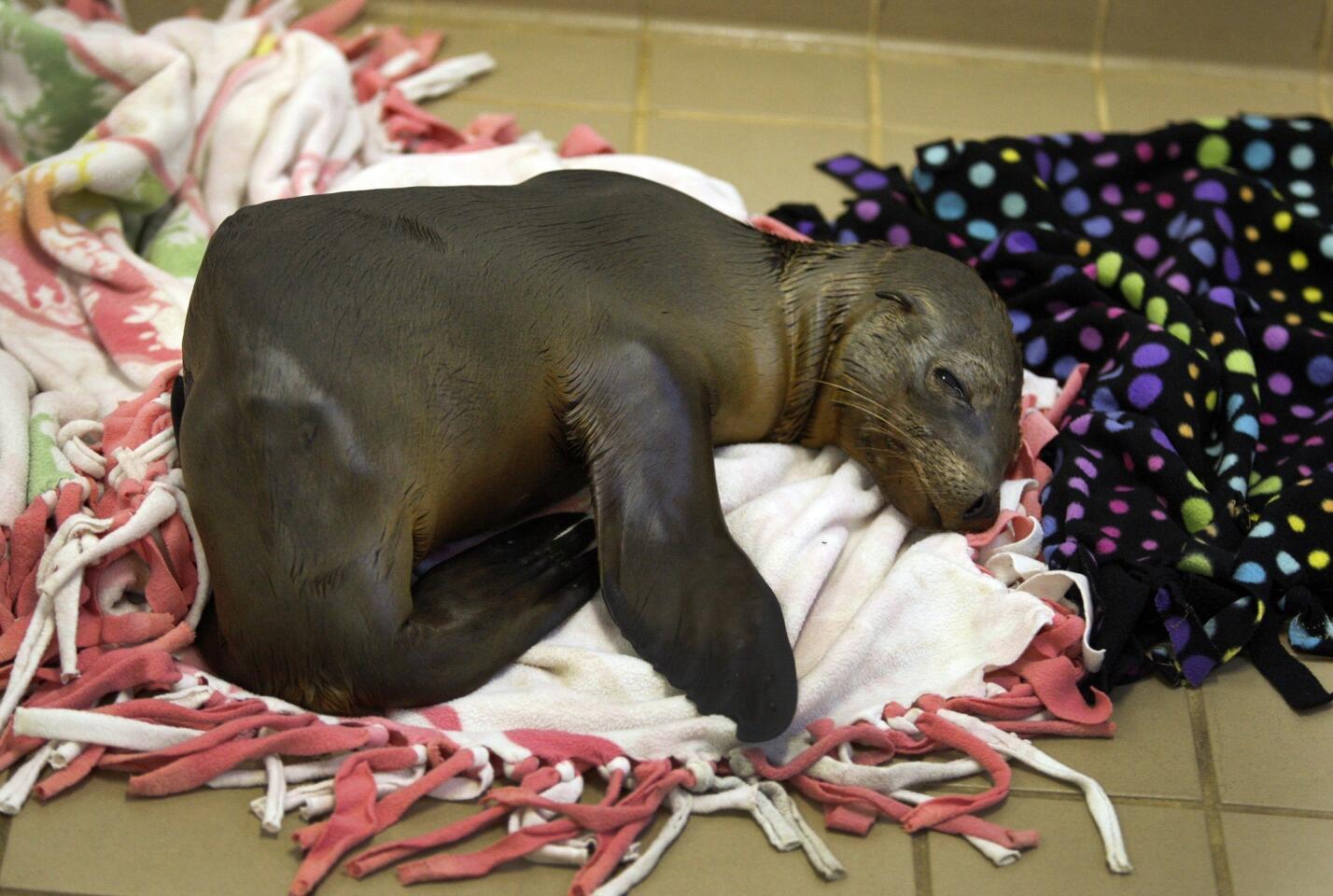
A sea lion pup rests in the center’s nursery. The new arrivals start off in what could pass as a couple of emptied-out laundry rooms, where the pups snuggle on blankets or splay out their flippers to warm their emaciated bellies on the heated tile floors. (Allen J. Schaben / Los Angeles Times)
From Santa Barbara to San Diego, marine mammal sanctuaries have taken in waves of emaciated sea lion pups at rates significantly higher than the norm for this time of year.
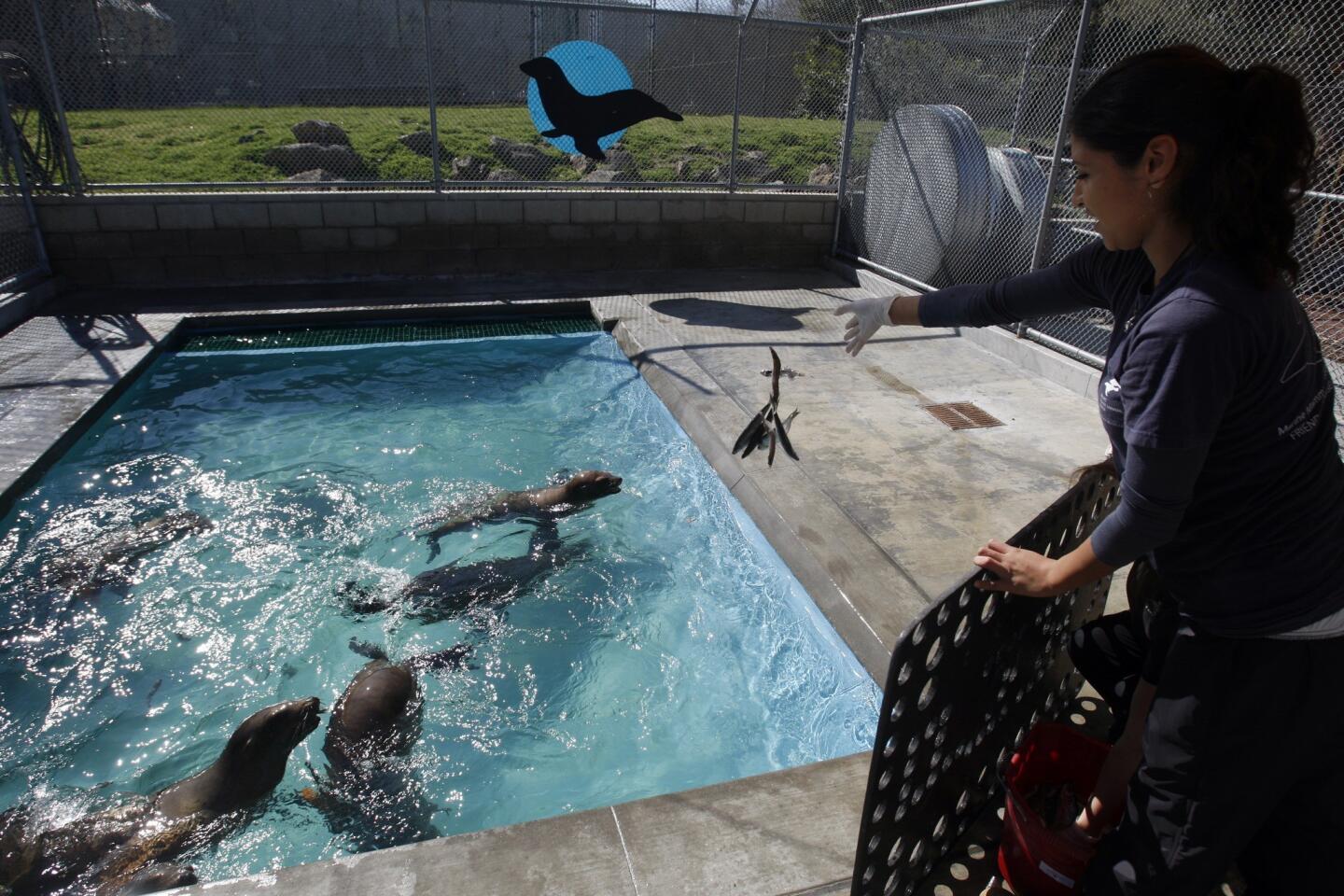
Volunteer Julieanna Garcia feeds herrings to California sea lion pups at the Pacific Marine Mammal Center in Laguna Beach. They’re on the mend after arriving malnourished, dehydrated and hypothermal. (Allen J. Schaben / Los Angeles Times)
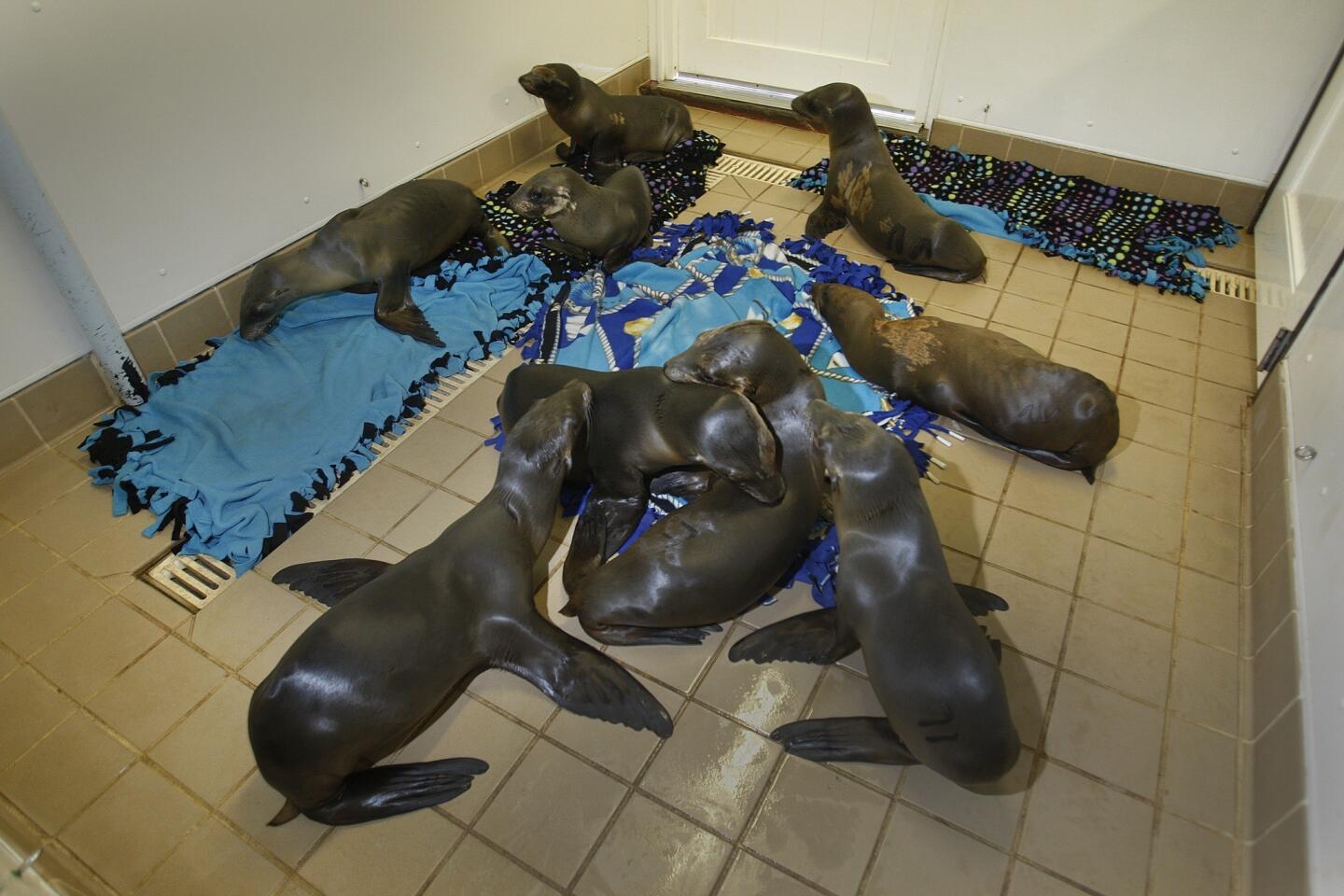
Nine of 12 newly arrived California sea lions rest in the nursery at the Pacific Marine Mammal Center. Their mothers had left them to forage for food, and they were stranded, fending for themselves. “When they come in, they’re so sick, so fragile,” said JoAnn Smith, a volunteer at the center. (Allen J. Schabe / Los Angeles Times)
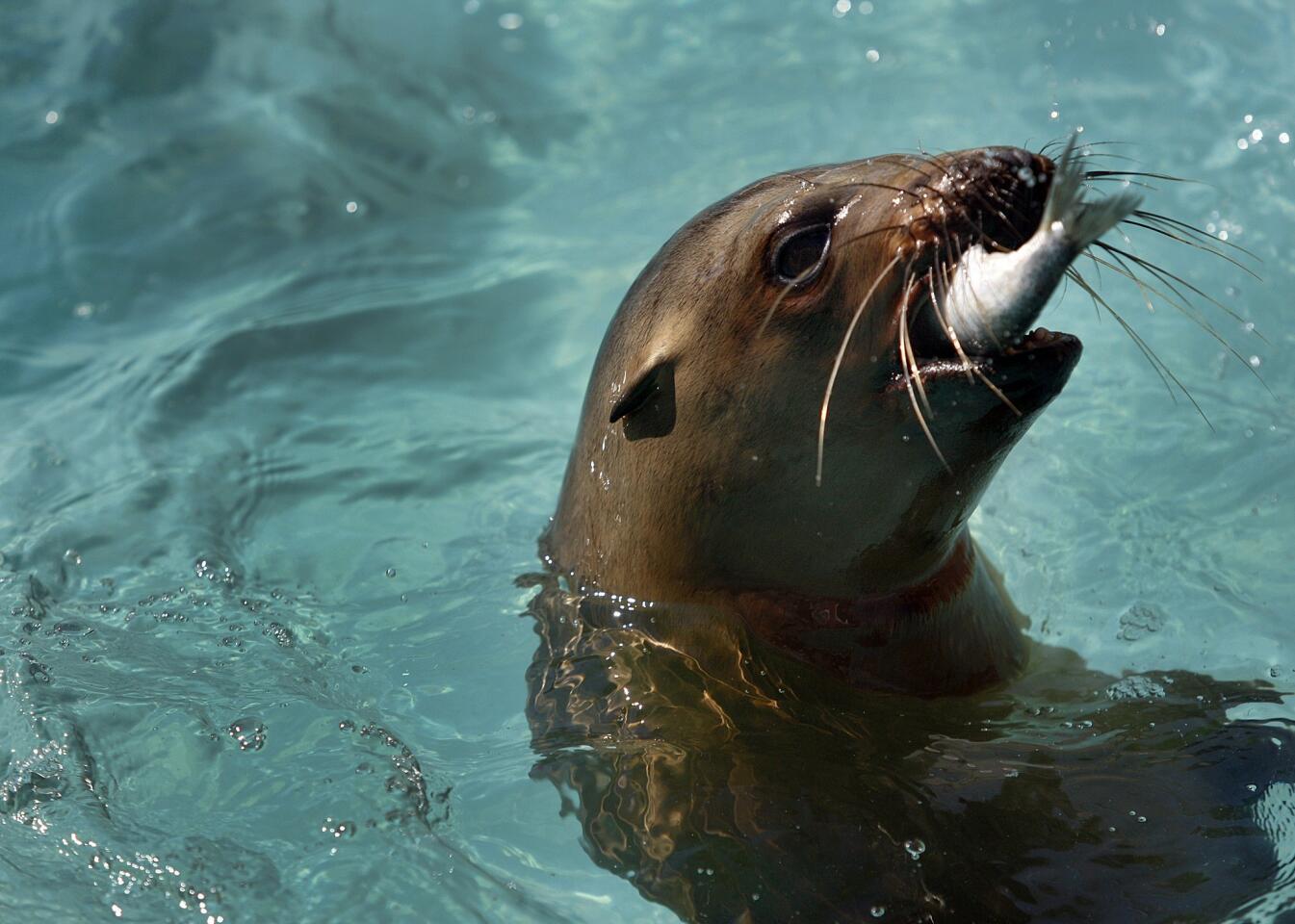
A young sea lion eats a herring as it recovers in a pool at the center. More than returning to good health, it seems the pups have really come alive. “They have such personalities,” said volunteer JoAnn Smith, “more than people know.” (Allen J. Schaben / Los Angeles Times)
Advertisement
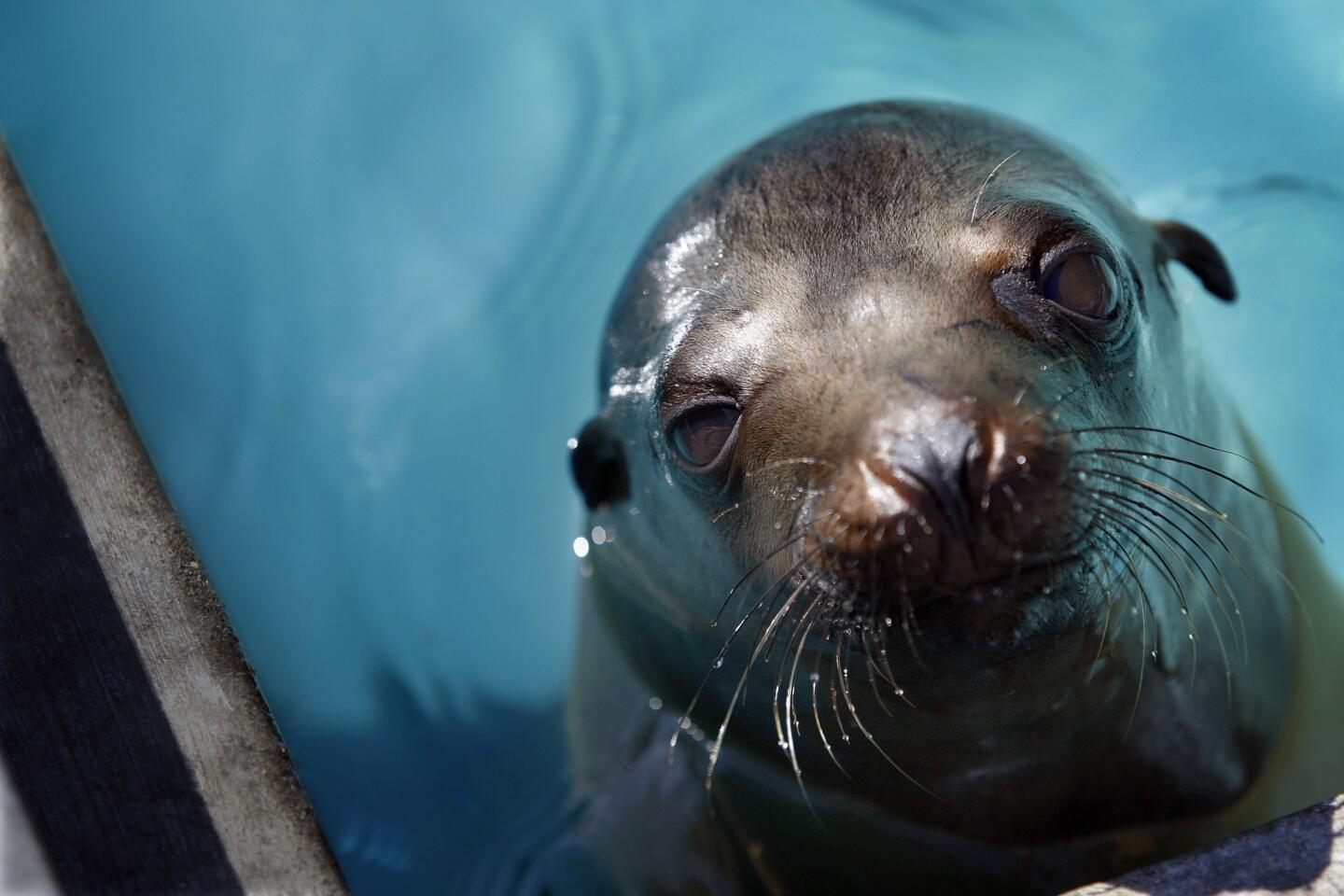
The pups’ stays can last for a few months, and the caretakers come to know them as they mature. “The biggest thing,” said Michele Hunter, director of animal care, “is seeing them released back into their natural habitat.” (Allen J. Schaben / Los Angeles Times)







